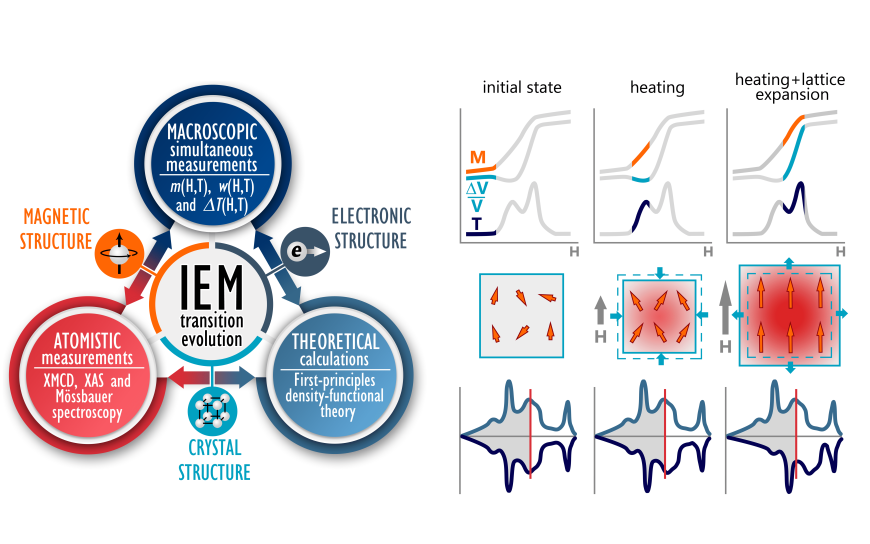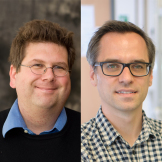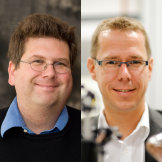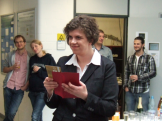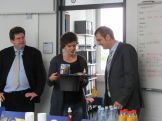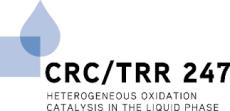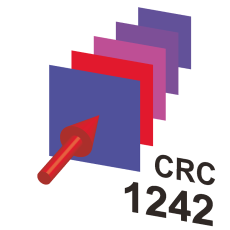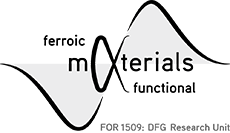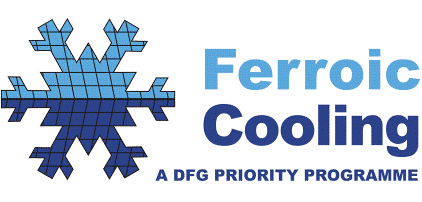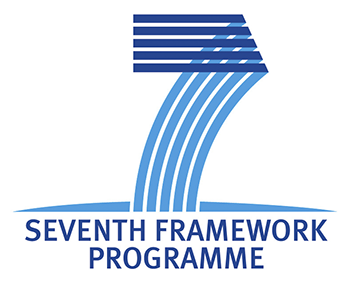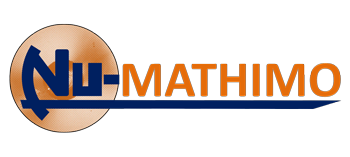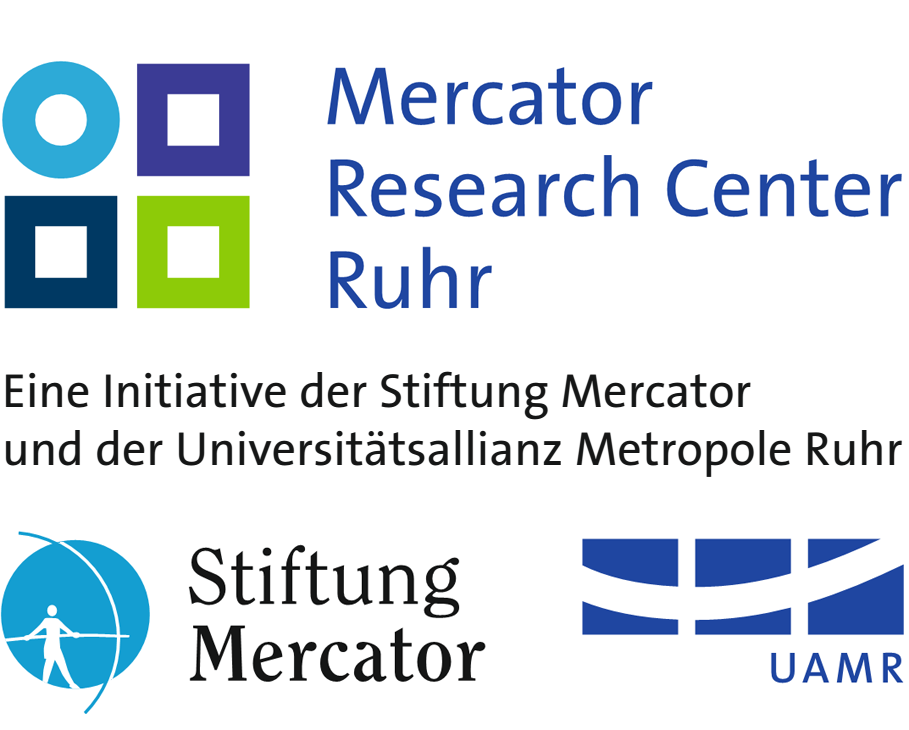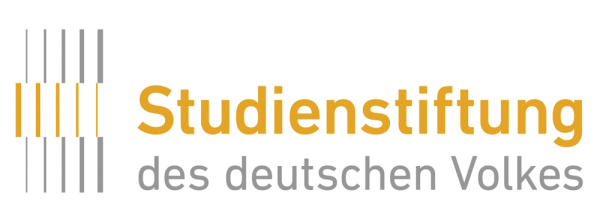AG Wende - Welcome
Welcome to the group of Prof. Wende Magnetic nanostructures
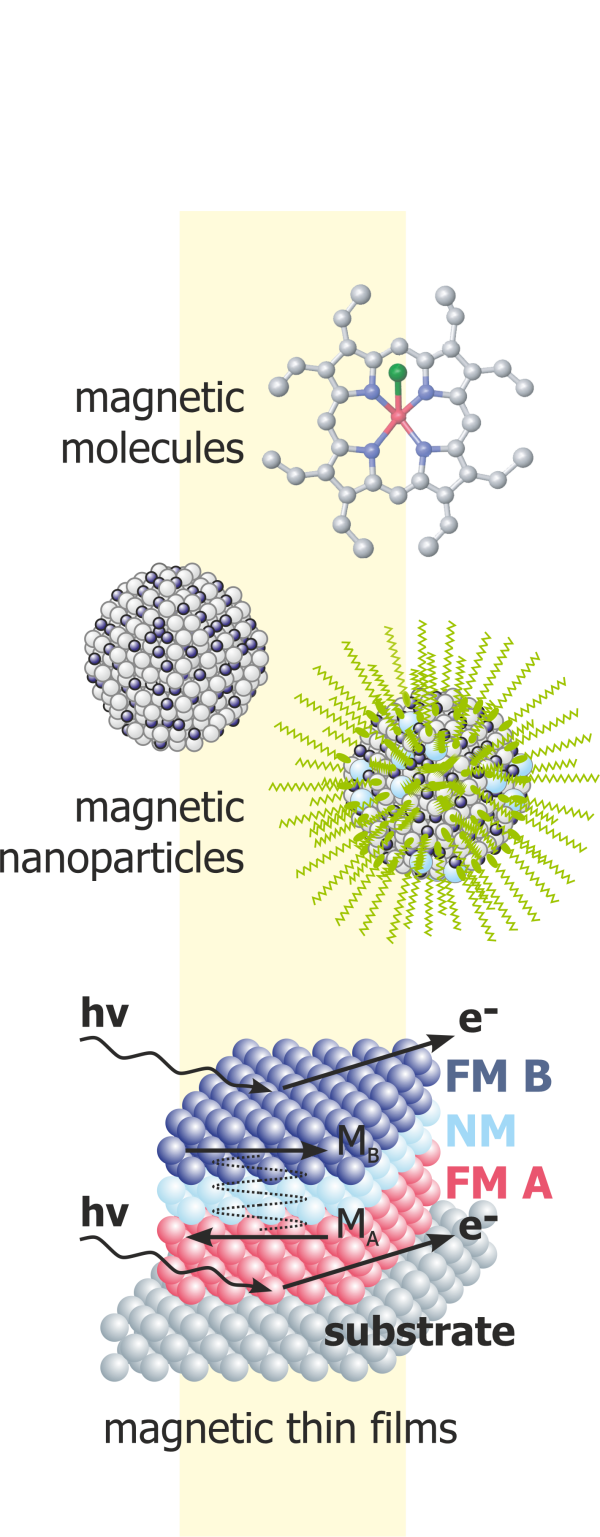
Address
Universität Duisburg-Essen
Fakultät für Physik
Experimentalphysik - AG Wende
Lotharstr. 1
47057 Duisburg
Head of group
Prof. Dr. Heiko Wende
room: MD 464
phone: +49-(0)203-379-2838
e-mail: heiko.wende[at]uni-due.de
Office
Christiane Leuchtenberger
room: MD 465
phone: +49-(0)203-379-2385
fax: +49-(0)203-379-3601
e-mail: christiane.leuchtenberger[at]uni-due.de

06.11.2025 Best Paper Award at the CENIDE Annual Celebration 2025
As part of the celebrations for CENIDE's 2025 anniversary, Best Paper Awards were presented to early career researchers in six categories. Out of a total of 41 nominations, our group member Lea Kämmerer won the Best Paper Award 2025 in the category “Dynamic Processes in Solids” with her publication “Femtosecond Spin-State Switching Dynamics of Fe(II) Complexes Condensed in Thin Films.”
13.08.2025 Dr. Katharina Ollefs assumes professorship at Heidelberg University.
The Faculty of Physics congratulates Katharina Ollefs on her appointment to the W3 Professorship for Solid State Physics at Heidelberg University. She assumed her position on August 1, 2025.
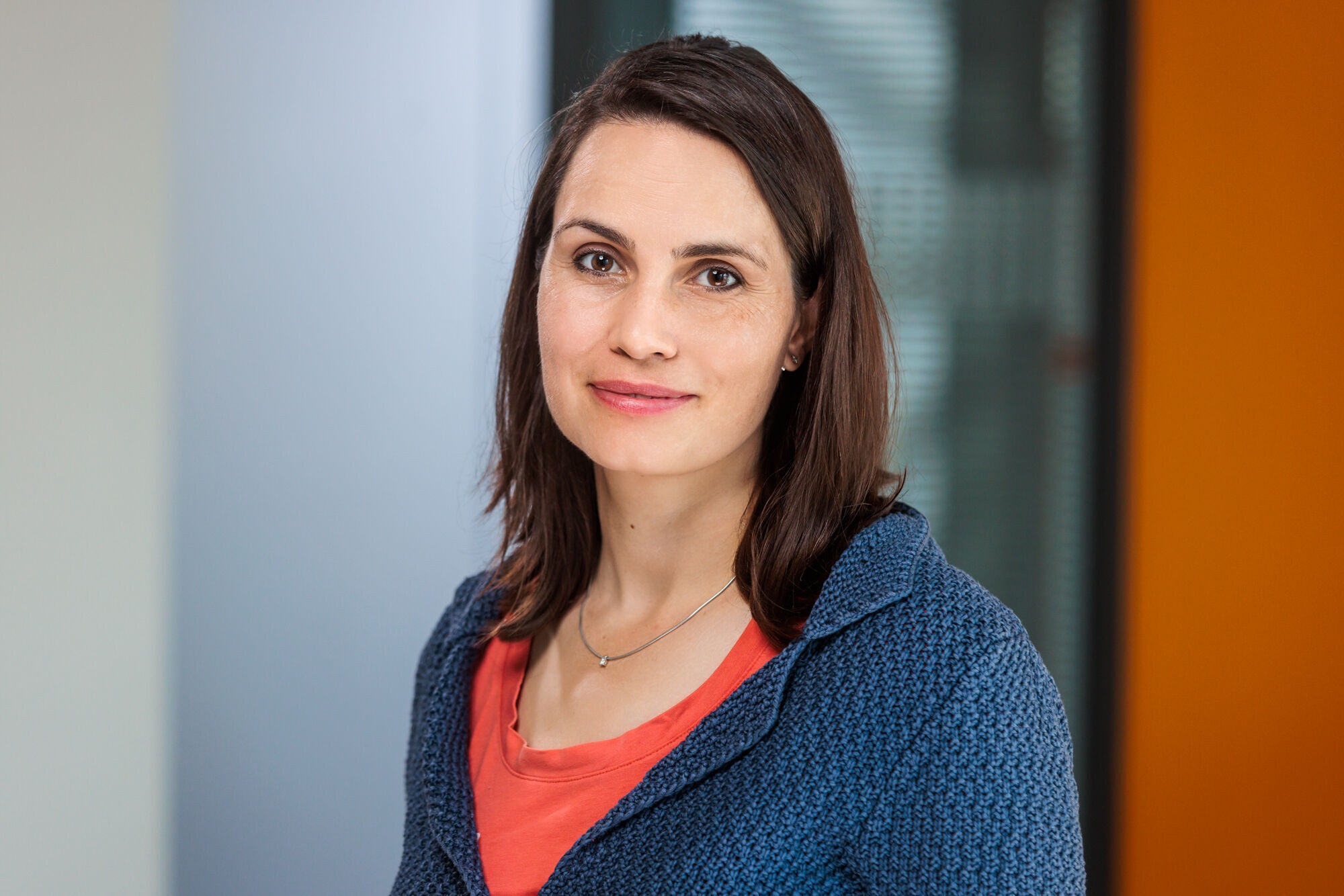
Katharina Ollefs studied physics at our faculty from 2003 to 2008 and received her PhD in 2012 in the research group of Prof. Dr. Michael Farle. She then conducted research for more than two years at the European Synchrotron Radiation Facility (ESRF) in Grenoble. Attracted by the excellent research environment, she returned to the Ruhr area to join the research group of Prof. Dr. Heiko Wende. There, she quickly made her mark as a project leader, notably in the Collaborative Research Centers CRC/TRR 270 HoMMage and CRC 1242, as well as in various BMBF-funded projects. She serves as a role model for young researchers not only through her outstanding scientific achievements, but also through her commitment to gender equality — for example, by helping to organize the German Women in Physics Conference.
We wish her all the best!

29.10.2024 Dies academicus 2024 - Best master thesis of the faculty of physics
Philipp Klaßen was honored by the Faculty of Physics at this year's Dies Academicus for the best master's degree. As part of his master's thesis, he used X-ray tomography at the cSAXS beamline at the Swiss Light Source electron accelerator in Switzerland to capture a 3D image of the magnetization in a nanocrystalline Nd-Fe-B magnet. This magnetic material is relevant for the development of permanent magnets with reduced proportions of heavy rare earths and is of particular interest to CRC/TRR 270 HoMMage.
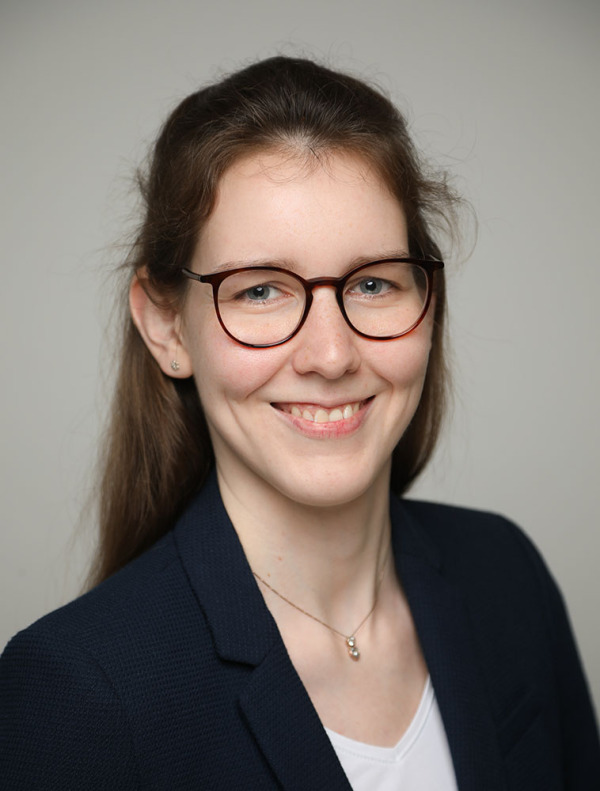
19.03.2024 Nobel laureate meeting in Lindau
On the 30th of June, Johanna Lill (AG Wende) and Jonas Fußangel (AG König) will head to Linda for the Nobel laureate meeting. Although the PhD candidate and student from our faculty probably still need some time for a Nobel prize, they were nevertheless proposed and selected to participate. According to the homepage of the organizer, the Nobel laureate meeting is a "globally recognized forum for the exchange between nobel laureates and young scientists". The markedly personal conferencing with such eminent scientists is a unique and unforgettable experience. Johanna Lill is currently researching within the framework of the CRC 270 HoMMage on topics regarding element and isotope specific characterization of magnetocaloric materials, including work at large scale research facilities such as the ESRF in France or the APS in the USA.
26.09.2023 Physicist of the Week Award to Lea Kämmerer
The German Physical Society (DPG) has awarded Lea Kämmerer, PhD student at the University of Duisburg-Essen and member of the working group of CENIDE board member Prof. Dr. Heiko Wende, the Physicist of the Week 2023 award in calendar week 38.

Foto © Tobias Lojewski
Since January 2018, the DPG's Equal Opportunities Working Group (AKC) has been recognizing women in physics in Germany or German women in physics abroad on a weekly basis. This initiative serves to highlight and recognize the impressive achievements of women in physics. Lea Kämmerer is conducting research as part of the CRC 1242. Her work focuses on the study of ultrafast non-equilibrium dynamics in condensed matter, with an emphasis on the study of ultrafast dynamics in spin-crossover molecules using time-resolved X-ray absorption spectroscopy. The 2023 Physicist of the Week award is in recognition of Lea Kämmerer's contributions to physics research.
Further information:
Lea Kämmerer: lea.kaemmerer[at]uni-due.de
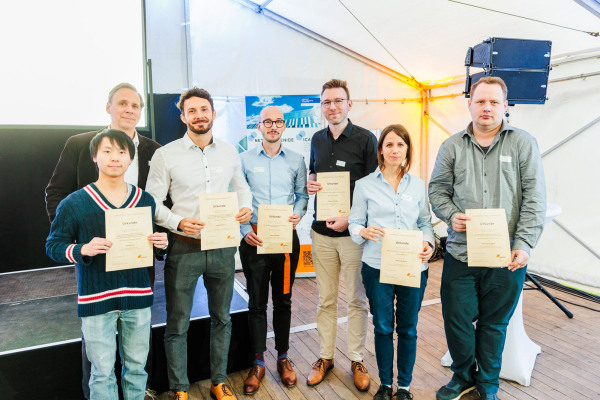
19.09.2023 Awards during CENIDE celebration
During the celebration of the 10th anniversary of the NETZ research building, several publications were honored with the best paper awards. Among them were our group members Tobias Lojewski with the publication "The interplay of local electron correlations and ultrafast spin dynamics in fcc Ni" in the journal Materials Research Letters, as well as Benedikt Eggert with "Impact of magnetic and antisite disorder on the vibrational densities of states in Ni2MnSn Heusler alloys" in Physical Review B.
03.08.2023 Joint publication of several CRC/TRR 270 projects and ID12 beamline at ESRF
A multi-stage, first-order phase transition in LaFe11.8Si1.2: Interplay between the structural, magnetic, and electronic degrees of freedom
The discontinuous nature of the transition in materials with a first-order magnetic transition is a consequence of the coupling between the magnetic, electronic, and structural subsystems, and such transition can, in principle, cross several metastable states, where at one point, the transition takes place within the magnetic subsystem, while at another, the changes occur in the structural or electronic subsystems. To disentangle the nature of such transition and relevant hysteresis mechanism, we designed two new experimental setups, allowing simultaneous measurement of magnetization, longitudinal and transversal magnetostriction, and temperature change of the sample, and conducted simultaneous measurements of the prototypical LaFe11.8Si1.2 alloy and revealed rich details of the magneto-structural, first-order transition.
We found that the transition does not complete in one but in two distinct stages, which cannot be described in the framework of commonly employed thermodynamic models. We complement these findings with experiments on the atomistic scale, i.e., X-ray absorption spectroscopy, X-ray magnetic circular dichroism, and Mössbauer spectroscopy, and then combine them with first-principles calculations to reveal the full complexity and two-stage nature of the transition. The obtained results can be extended to a large class of advanced magnetic materials with itinerant moments exhibiting comparable field- and temperature-induced transformations, for example, Mn-Fe-P-Si, and Heusler-type alloys
This publication results from a collaboration of CRC/TRR 270 projects B01, A03, B05, and B06, in close cooperation with the ID12 beamline at ESRF, Grenoble, within the framework of the BMBF project “ULMAG”.

16.06.2023 Best Poster Prize awarded to Johanna Lill
During the conference "Trends in magnetism" in Örebrö (Sweden), Johanna Lill, our group member, won the best poster award with her poster entitled "Vibrational entropy change at the first order phase transition in magnetocaloric DyCo2". The main focus of the conference is to exchange recent research findings in magnetism, magnetic materials and spintronic devices and was organized in close collaboration with the CRC/TRR 270 HoMMage.
Following the growing demand for interdisciplinary research, scientists from, e.g., geoscience, chemistry, or medicine, are invited to join the event and to discuss magnetism research in or overlap of magnetism research to their field of interest.
20.03.2023 Ph.D. Focus Session: Non-equilibrium dynamics in theory and experiment
We proudly want to announce that the Ph.D. students Lea Spieker (AG Wende) and Gérald Kämmerer (AG Kratzer) have successfully applied for a Ph.D. Focus Session for the upcoming DPG conference of the SKM Section in Dresden.
In their session, they want to highlight the gap between theory and experiment on the topic of non-equilibrium dynamics. Four high-class speakers, Sangeeta Sharma, Cyrille Barreteau, Julia Stähler, and Emmanuelle Jal, will present talks about femtomagnetism, spin-switchable molecules, photodoping, and ultrafast magnetization effects.
In the end, the session will conclude with a podium discussion.
Time and Place: 29.03.2023 15:00-18:00 in HSZ 02
Abstracts can be found here: https://www.dpg-verhandlungen.de/year/2023/conference/skm/part/ma/session/30
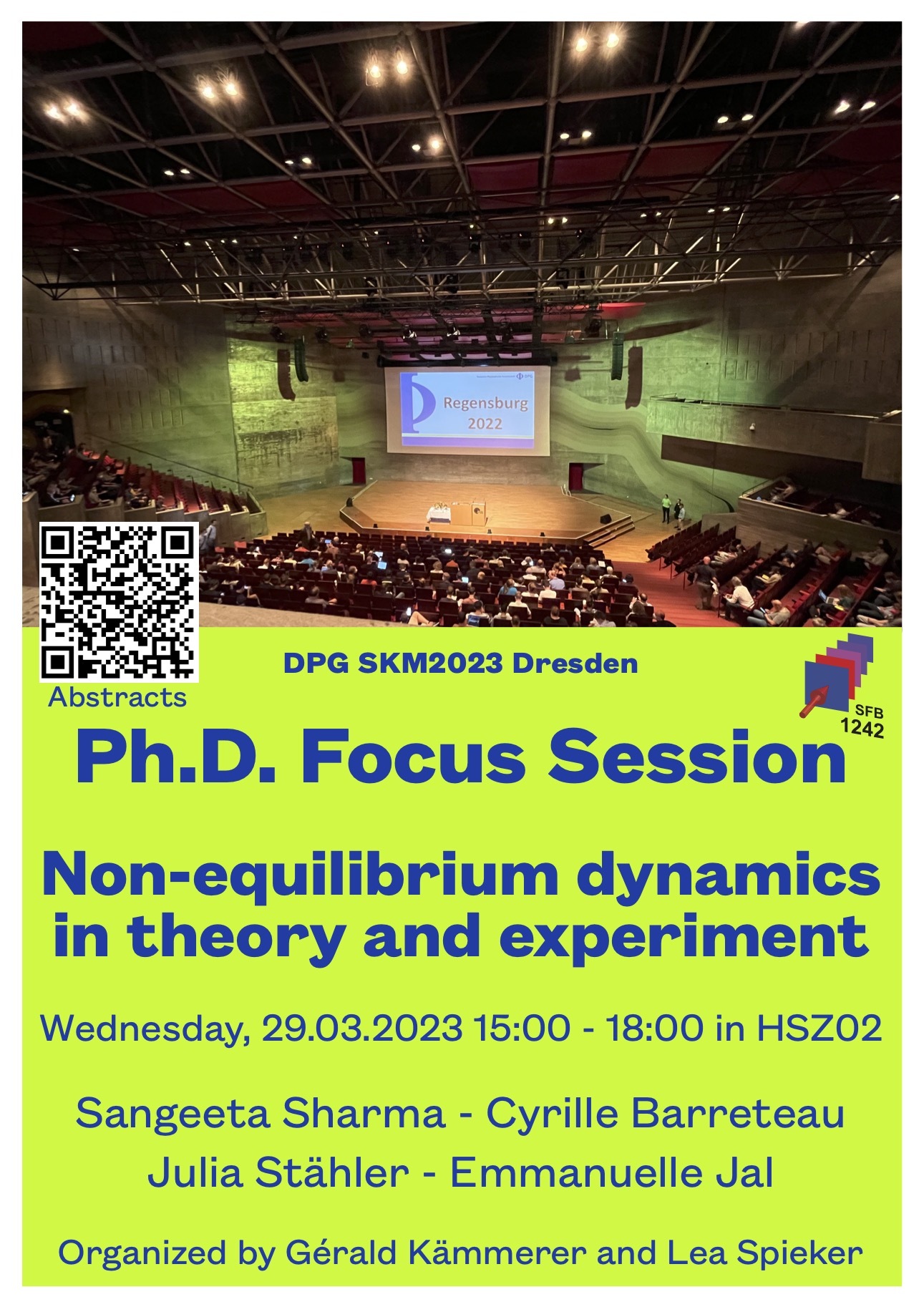
05.10.2022 PUMA helps the energy revolution
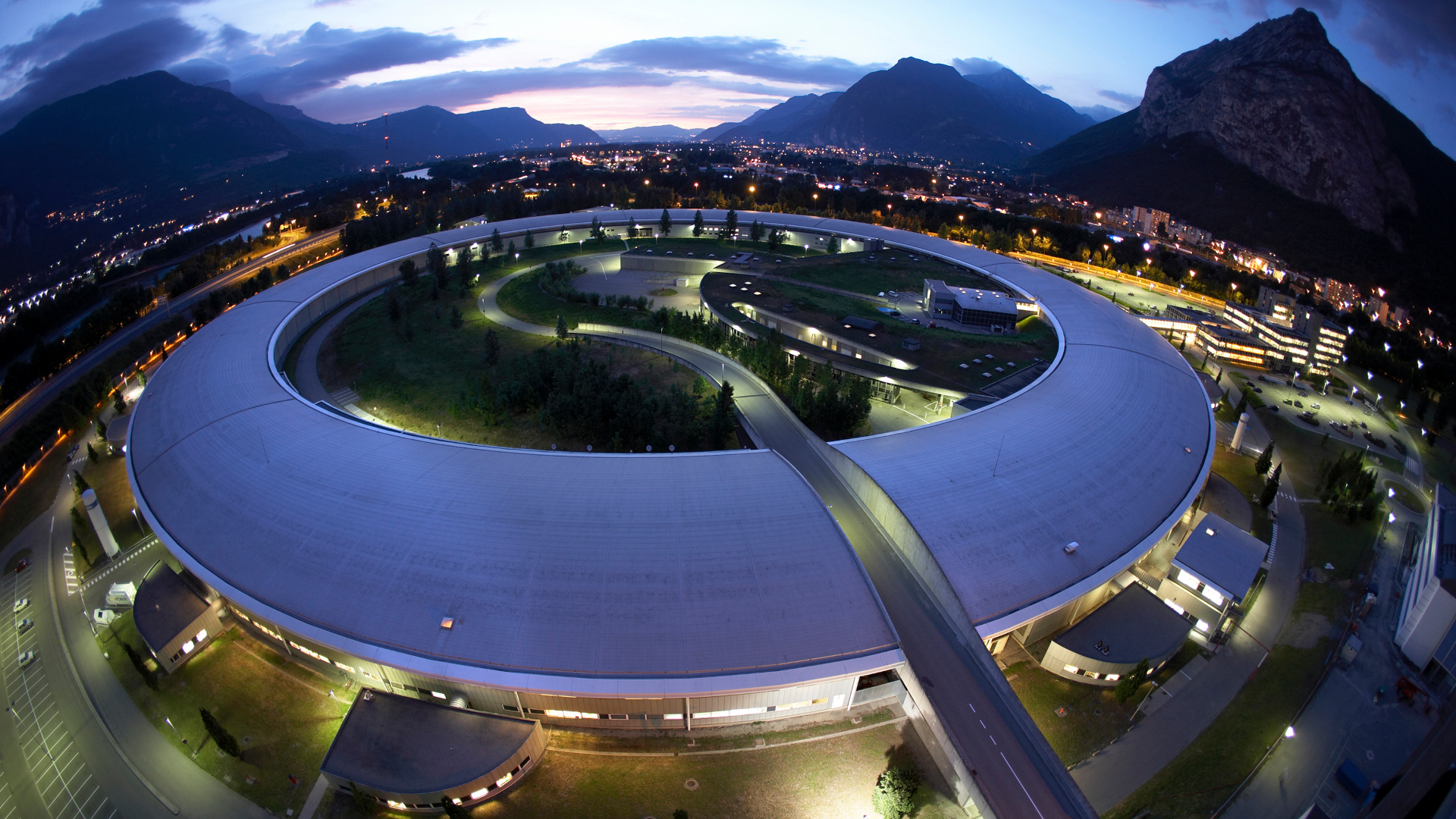
© ESRF/P. Jayet
High performance magnets can be utilized for effective cooling, heating as well as energy generation, playing a significant role for the energy revolution. A joint network under the leadership of the UDE performs research on new magnetic materials that are more efficient and environmentally friendly. Partners in the Project PUMA* are the Technische Universität Darmstadt and the Helmholtz-Zentrum Dresden-Rossendorf (HZDR). The federal ministry supports PUMA from October onwards for four years with two million Euros.
Whether in robotics, data storage or energy transformation: Magnets are already being used in many areas. In order to produce them, different metals and minerals are required, often rare earths. In Project PUMA, scientists have set out to develop highly efficient magnets that can do without these scarcely available and thus critical raw materials.
"We will concentrate on permanent magnets on the one hand. These have an extremely high efficiency and are useful in motors for electric mobility or in generators for wind turbines", explains project leader Prof. Dr. Heiko Wende of the UDE. His colleague from the TU Darmstadt, Prof. Dr. Oliver Gutfleisch, adds: "On the other hand, we research new materials, which utilize the magnetocaloric effect. This means that different metals and alloys can change their temperature, as soon as they are exposed to a magnetic field. We are interested in this phenomenon in terms of solids state cooling as climate friendly alternative to conventional gas-compressor coolers."
The two university partners are already working together, such as in the DFG Collaborative Research Centre/Transregio 270. For the necessary characterization efforts, this joint network will utilize the large-scale facility ESRF in Grenoble, which is one of the most brilliant X-ray sources in the world.
* PUlsed high MAgnetic fields for new functional magnetic materials
04.07.2022 Dies academicus 2022 - Best master thesis of the faculty of physics
Johanna Lill received an award for the best master thesis at the faculty of physics. After a semester abroad in Trondheim, she completed her master's in the Wende group, using Mössbauer spectroscopy to characterize lanthanum doped La(Fe,Si)13, a magnetocaloric material that is of particular interest in the CRC/TRR 270 HoMMage.
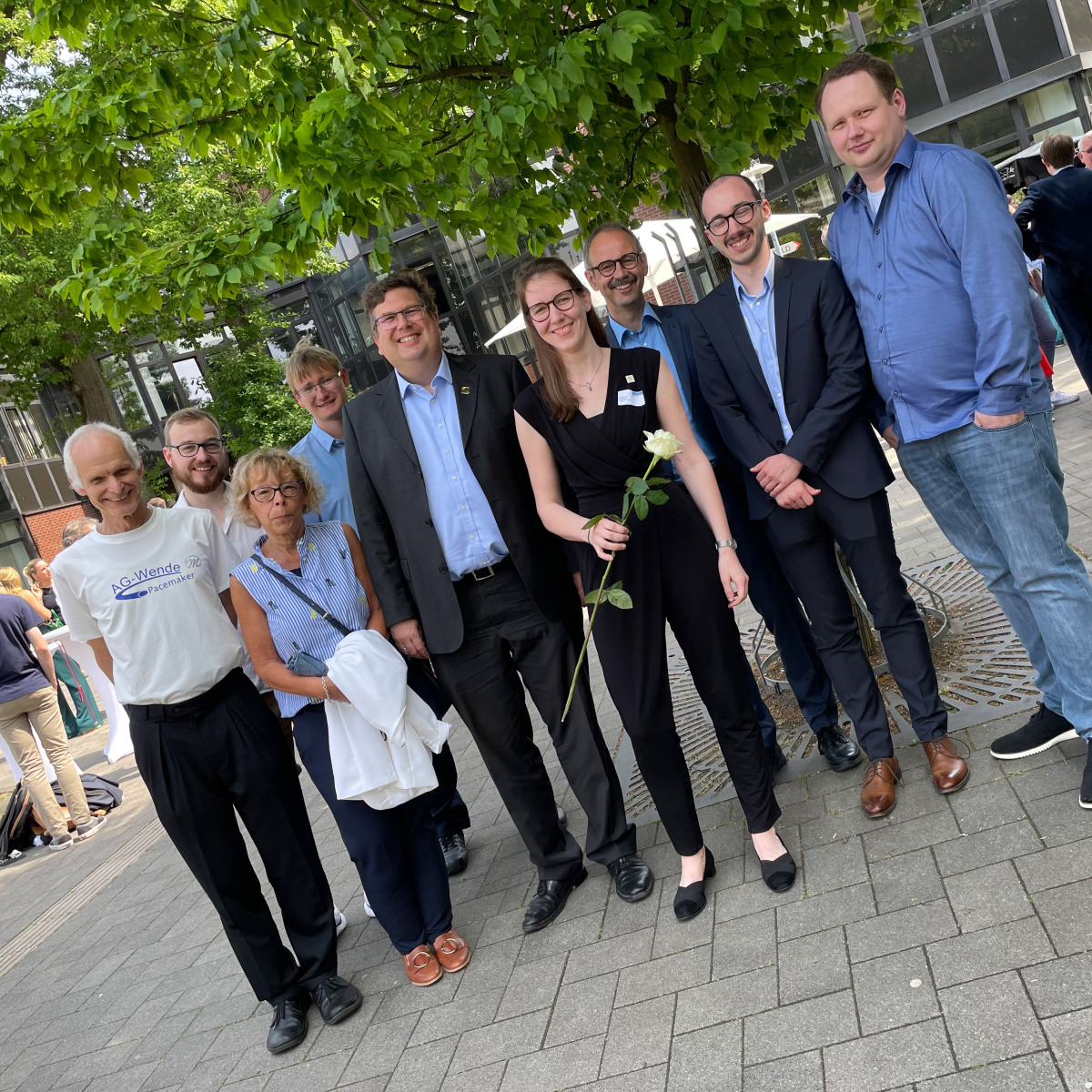
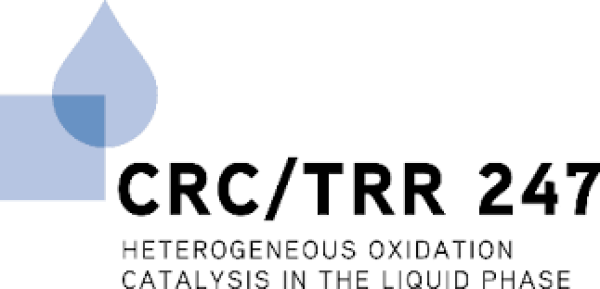
30.05.2022 Second funding period granted for CRC/TRR 247
After a successful evaluation by the German Research Foundation (DFG), the collaborative research centre CRC/TRR 247 "Heterogeneous Oxidation in the Liquid Phase" will receive funding for another four years (2022-2026). The Wende group is represented via the project B02 "Relating Element-Specific Electronic and Geometric Structure of Transition Metal Oxides to Their Catalytic Activity". Many thanks to all who contributed - for the ideas, the enthusiasm and the countless hours of joint work on this project as an amazing team. The new speakers of the second funding period are Prof. Kristina Tschulik (RUB) and Prof. Stephan Schulz (UDE).
16.05.2022 AG Wende publishes in Energy & Environmental Science: Coordination of Fe in Ni(OH) systems
A cooperative paper under the leadership of Prof. Rodney Smith (University of Waterloo) was accepted for publication in the renowned journal Energy & Environmental Science (impact 38.5). It deals with the important catalyst material FexNi1-x(OH)2 and the different coordination environments of the Fe-ions. It was possible, thanks also to our element-specific Mössbauer spectroscopy characterization, to determine that apart from the expected coordination, another non-traditional coordination environment was present for Fe-ions doped into the Ni(OH)2 lattice. These environments can be achieved by the use of different sythesis methods, which also directly affects the catalytic activity of the respective material.
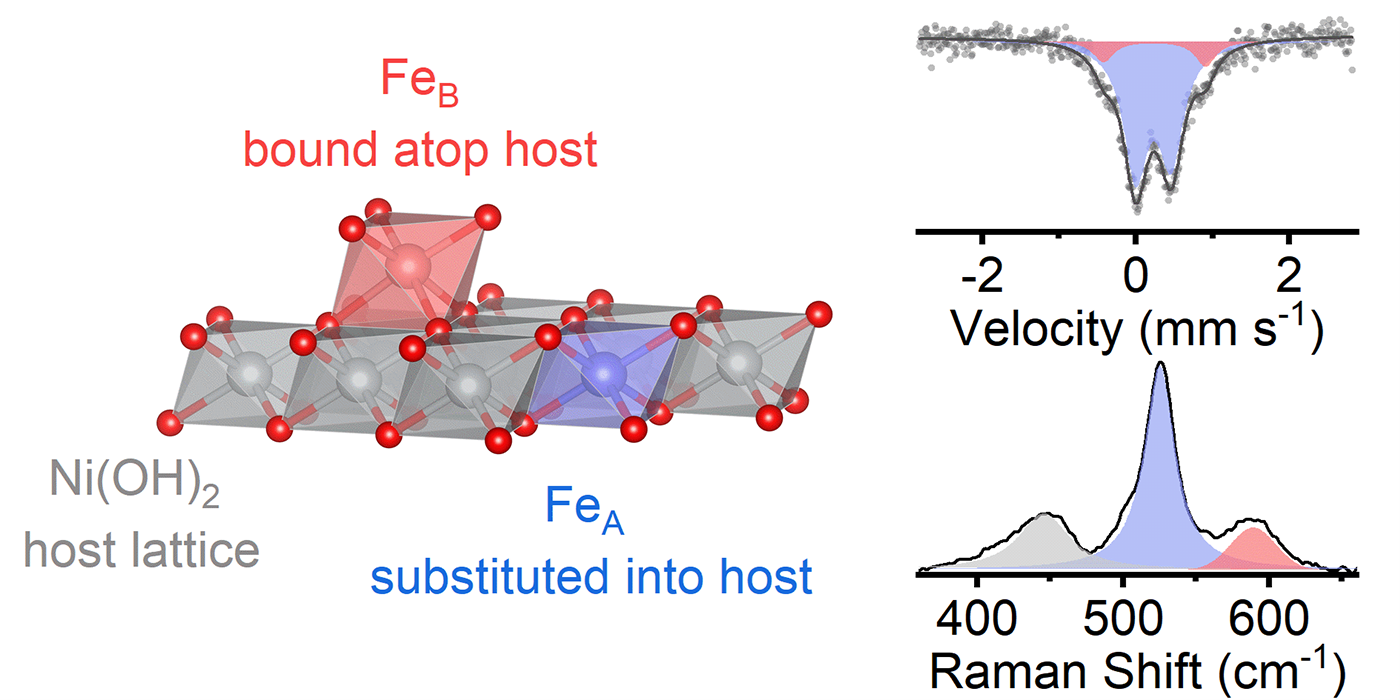
Depiction of different Fe-positions, corresponding Mössbauer and Raman spectra, from E. P. Alsaç, K. Zhou, W. Rong, S. Salamon, J. Landers, H. Wende, and R. D. L. Smith, Energy Environ. Sci. 15, 2638-2652 (2022)
25.04.2022 Beamtime at the SCS instrument of XFEL
Within the framework of the CRC 1242, a beam time at the SCS instrument of the European XFEL was acquired, which was carried out by members of the working groups Wende and Bovensiepen. There, at the world’s largest free electron laser, time-resolved experiments in the ultrafast regime were performed on thin spin-crossover molecular films at room temperature. The characterization of ultrafast dynamics in such molecules is one of the main goals of project A05 within the CRC 1242. The group photo shows staff members of the SCS instrument, as well as the members of project A05, A07 and C01, united in happiness about the successful beamtimes. The obtained data is currently being evaluated in order to reap the fruits of this substantial labor.
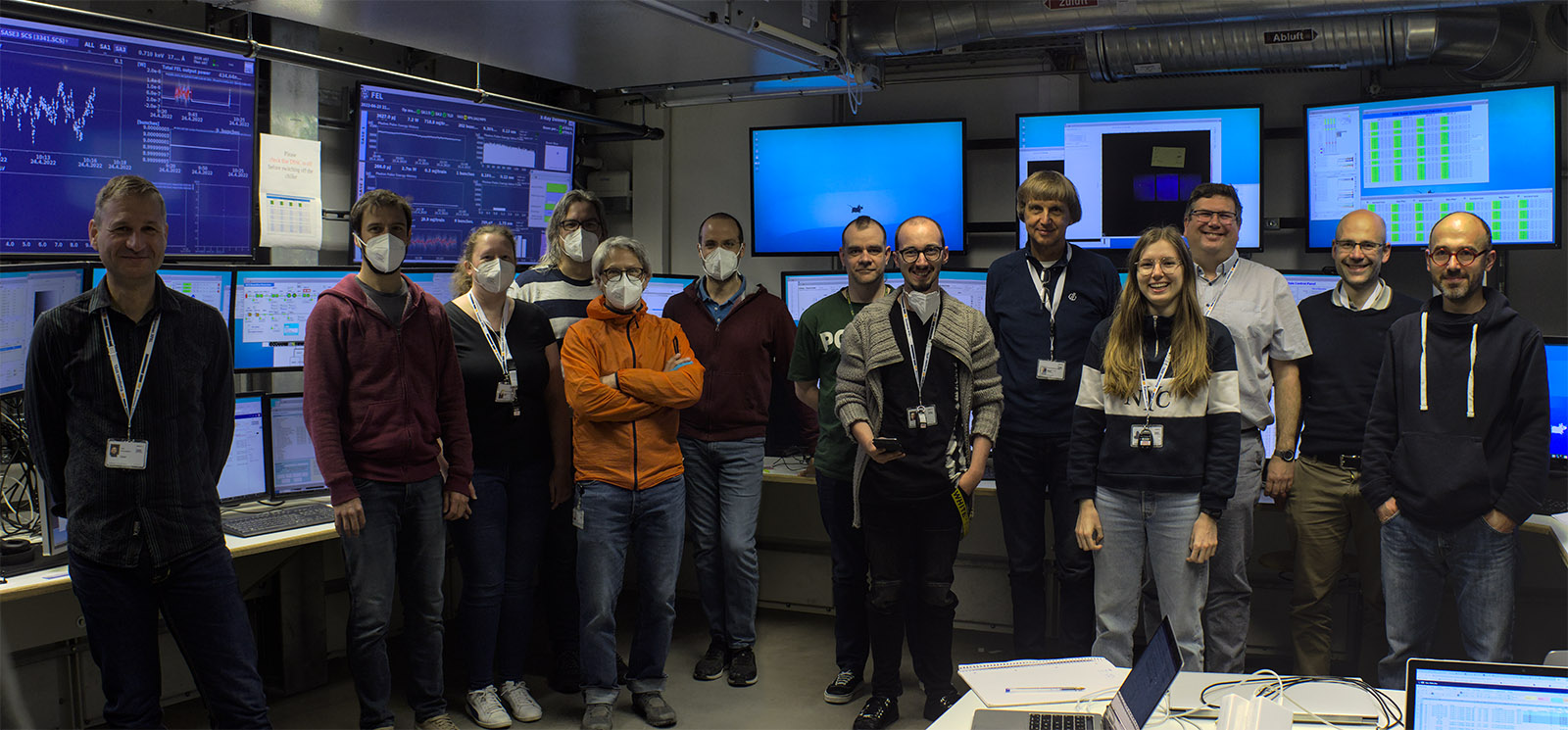
Group picture of the staff of the SCS instrument and the groups Wende and Bovensiepen.
22.01.2022 AG Wende on the cover of Chem. Eur. J.
A joint paper, written under the leadership of Dr. Senthil Kumar Kuppusamy (AG Ruben, KIT) within the framework of the CRC 1242, was recently chosen to be on the cover of Chemistry - A European Journal.
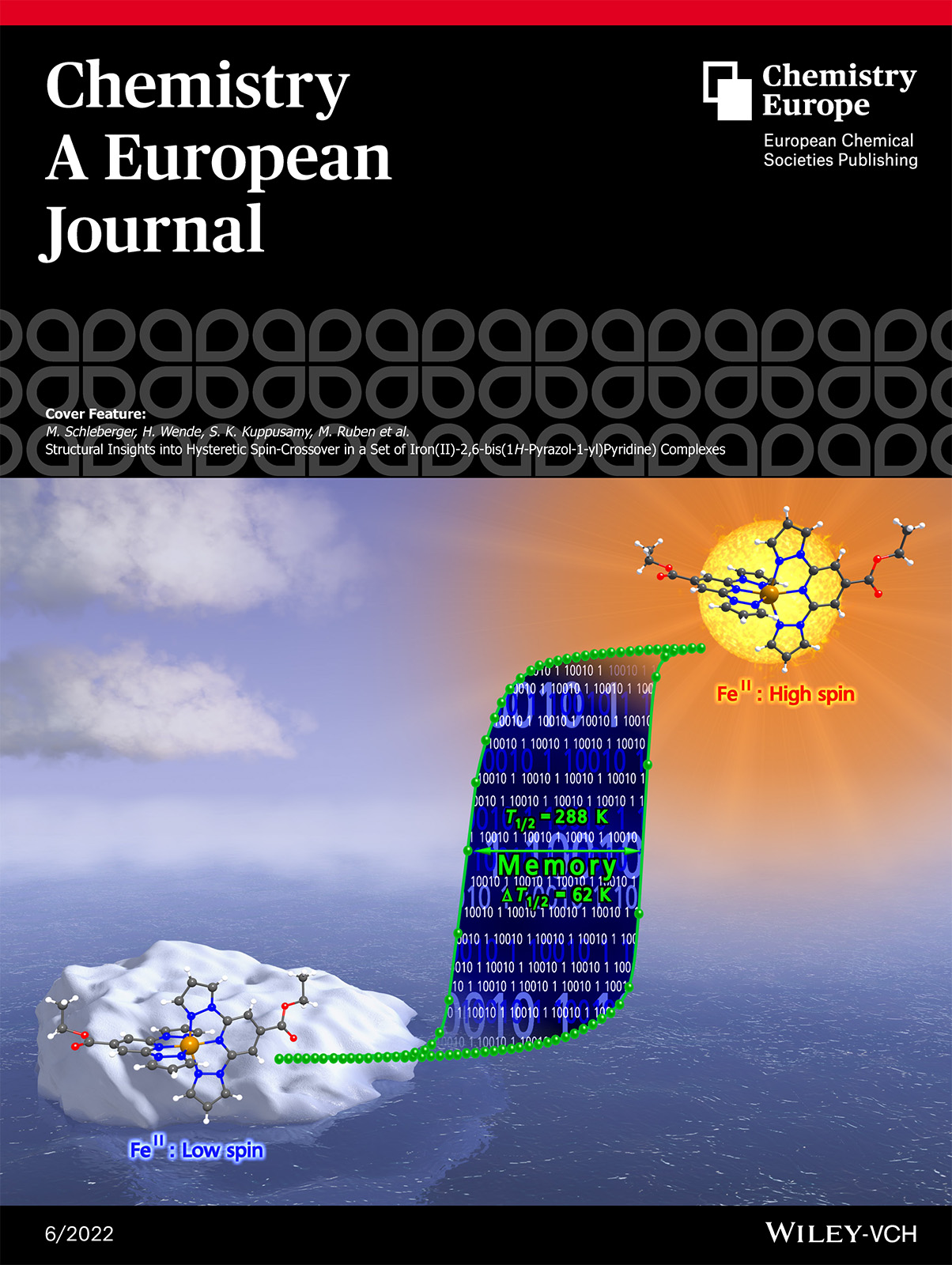
N. Suryadevara, A. Mizuno, L. Spieker, S. Salamon, S. Sleziona, A. Maas, E. Pollmann, B. Heinrich, M. Schleberger, H. Wende, S. Kumar Kuppusamy, and Mario Ruben, Chem. Eur. J. (accepted December 2021) © 2022 Wiley‐VCH GmbH
The publication reports the synthesis and structural facets of a bi-stable Fe(II) spin-crossover complex. Our contribution consisted of the determination of the spin-state switching temperatures and thermal hysteresis width via magnetometry measurements. In addition, we performed Mößbauer spectroscopy measurements to elucidate the spin-state composition at specific temperatures. Together with the AG Schleberger, we performed temperature-dependent Raman spectroscopy measurements combined with optical microscopy pictures. Among changes in the region around 1000 cm-1, a RayShield filter allowed us to observe ultra-low frequency modes down to 10 cm-1, which can be associated with the vibrations arising from the Fe(II) ion.
15.01.2022 AG Wende publishes in Angewandte Chemie - Proof of spin crossover in cobalt complexes
In a cooperation under the leadership of Richard Berndt (CAU Kiel) and Manuel Gruber (Uni DuE), it was possible to detect spin-transitions in complex cobalt-tetramers on a silver surface using raster tunnel microscopy. So-called spin-crossover (SCO) molecules are promising candiates for the future of data storage, offering significantly higher storage densities than what is possible today, while a majority of known complexes are usually based on iron. Our contribution consisted of the element-specific analysis of these complexes via photo emissions spectroscopy.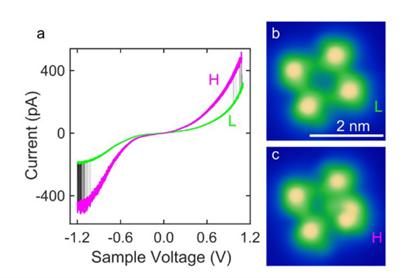
Current-voltage curves (a) of the moleculres in their ground state L (b) and the excited state H (c). S. Johannsen, S. Ossinger, J. Grunwald, A. Herman, H. Wende, F. Tuczek, M. Gruber, and R. Berndt, Angew. Chem. Int. Ed. (accepted January 2022)
05.11.2021 AG Wende on the cover of J. Mater. Chem. A
A joint paper, spearheaded by Prof. Stephan Schulz within the framework of the CRC/TRR 247, was recently selected to be on the cover of the Journal of Materials Chemistry A.
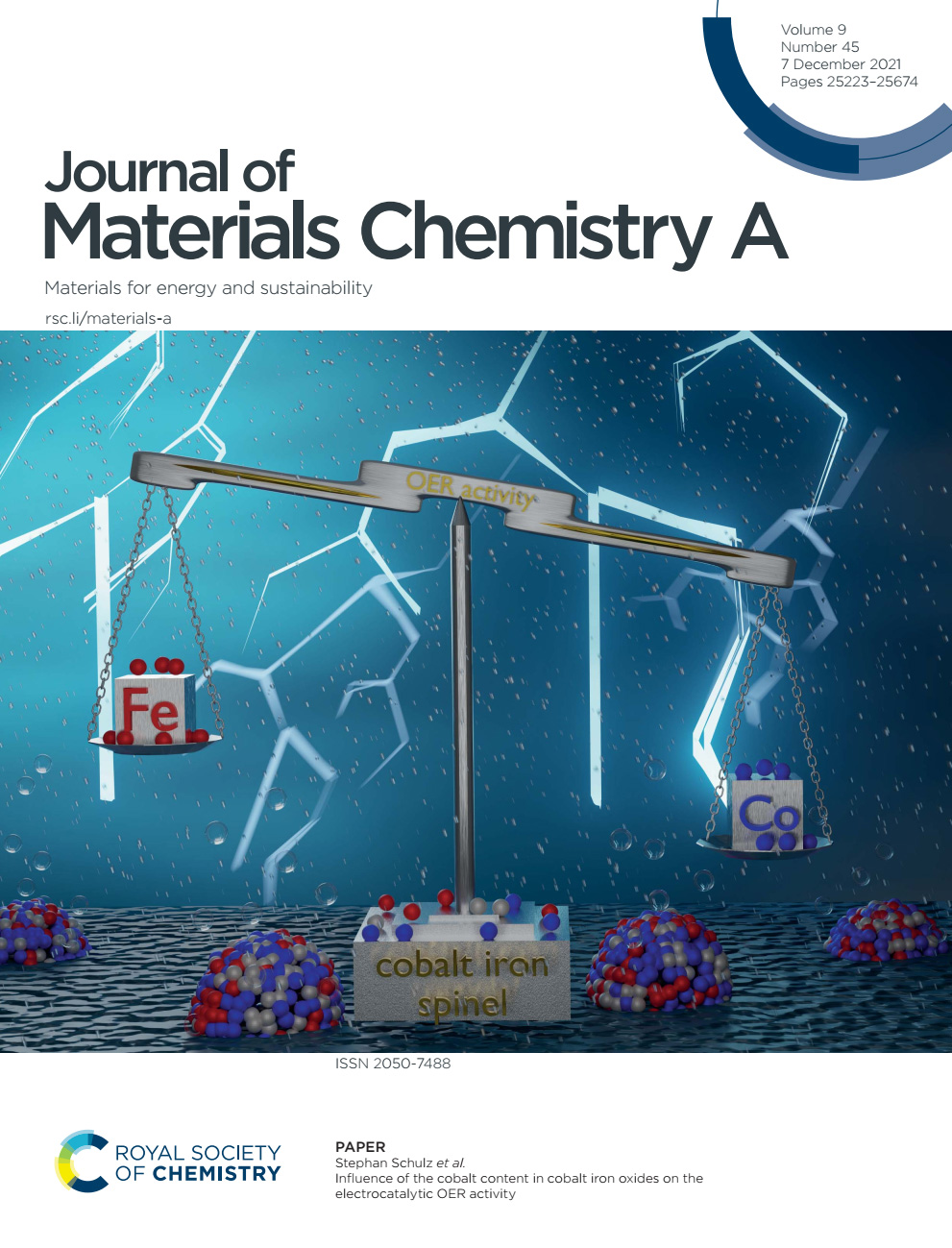
S. Saddeler, G. Bendt, S. Salamon, F. T. Haase, J. Landers, J. Timoshenko, C. Rettenmaier, H. S. Jeon, A. Bergmann, H. Wende, B. Roldan Cuenya and S. Schulz, J. Mater. Chem. A 9, 25381 (2021) Creative Commons Attribution-NonCommercial 3.0 Licence
Within this work, the influence of the cobalt content in Co-Fe mixed oxide systems on their catalytic properties was evaluated. Our contribution consisted of the determination of the Co and Fe ion distribution via Mössbauer spectroscopy, supported by complementary magnetometry measurements. With this approach, we were able to identify significant changes of the fundamental magnetic character of the sample series, the endmembers of which are represented by the ferrimagnetic CoFe2O4 (cobalt ferrite) and the antiferromagnetic Co3O4 (cobalt oxide). Especially the transition region between these magnetically different materials shows the highest catalytic activity, and is to be characterized further in future works.
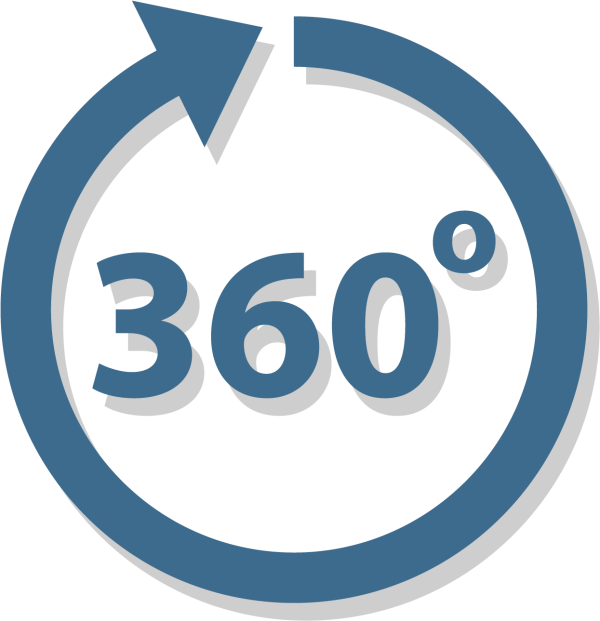
05.11.2021 Lab tours with 360° videos
Participants of the 25th German Female Physicists' Conference can use their smartphone and the 3D glasses contained in their conference bag to take part in interactive lab tours.
Please find these 360° videos in the poster are of our online platform, enabling further insights in addition to the poster session.
As examples for such lab tours, we have 360° videos from Samira Webers and Cynthia Pillich about various setups and research topics dealt with in our workgroup.
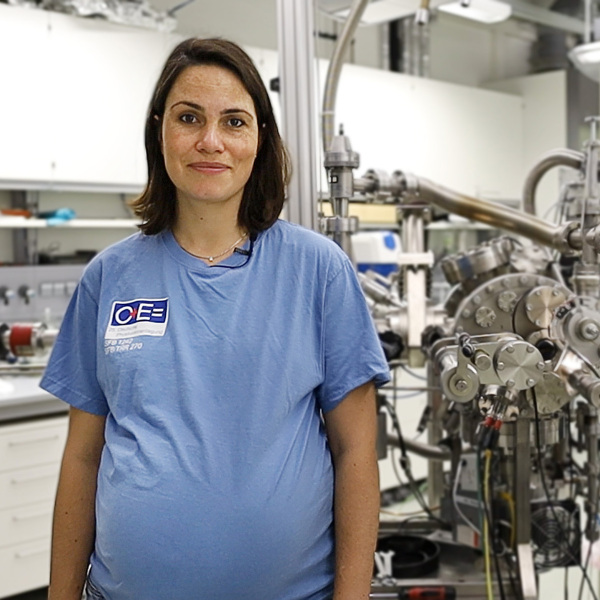
02.11.2021 "It is such a nice subject!"
Marie Curie - and who else? Women in physics are rare. To enable them to interact and network, the 25th German Female Physicists' Conference was set up by the UDE and the TU Darmstadt, taking place between the 8th and 10th of November. Around 300 participants from all career stages are expected, with registrations still open. An interview about annoying questions, one-sided upbringing, and potential Nobel laureates with the UDE organizer Dr. Katharina Ollefs.
The full interview (in German) can be found here.
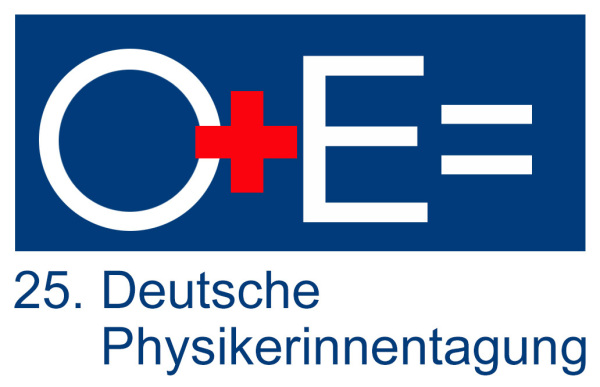
01.09.2021 German Female Physicists' Conference
Between the 8th and 10th of November 2021, the 25th German Female Physicists' Conference will concentrate on the professional exchange, career planning, and networking of women working in physics. Two of our staff members, Katharina Ollefs and Samira Webers, are part of the organization team. The scientific focus is composed of the established research collectives "Non-equilibrium dynamics of condensed matter in the time domain" (CRC 1242) in Duisburg, as well as "Hysteresis design of magnetic materials for efficient energy conversion" (CRC/TRR 270 HoMMage) in Duisburg and Darmstadt, with international speakers, discussions, as well as an exhibit with scientific posters. This purely digital venue is aimed chiefly at female physicists of different fields, from students to professors, from interns to industrial physicists in upper management, as well as all interested parties.
Start of registration: 01.09.2021
For further information and registration, visit: www.die-physikerinnen.de
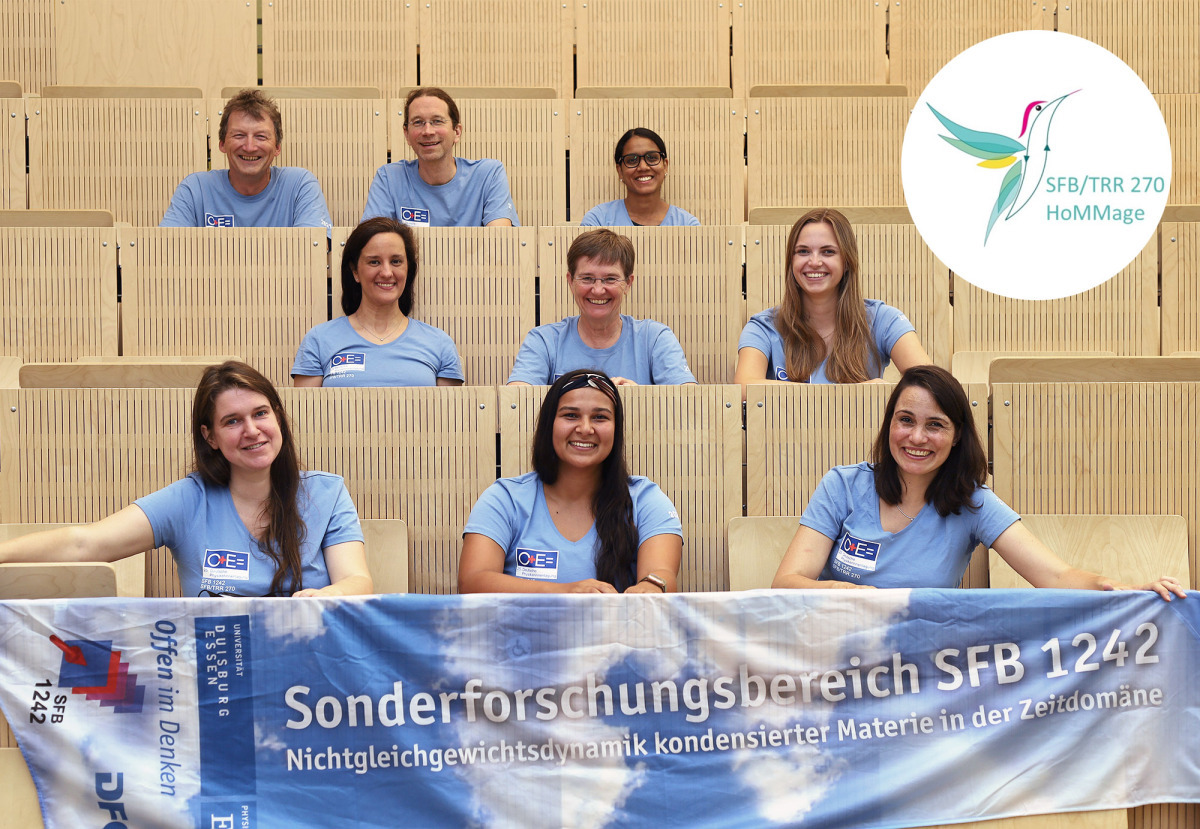
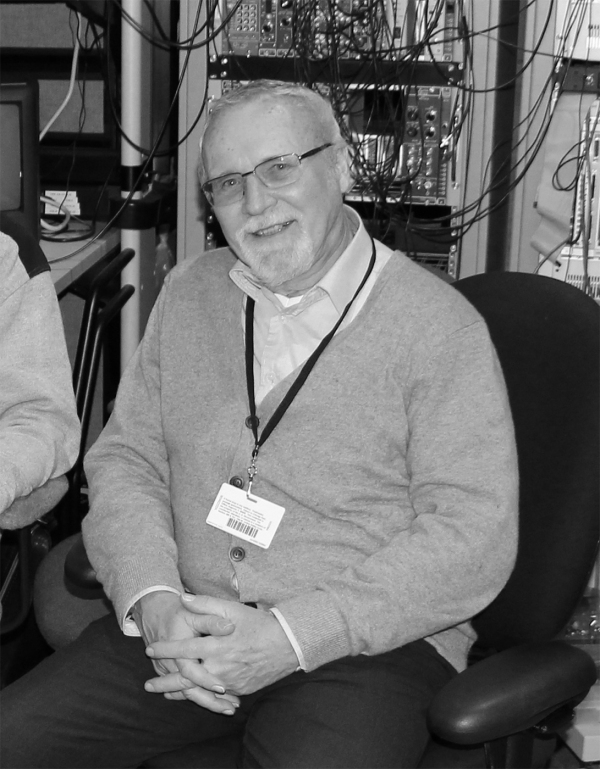
30.03.2021 In memoriam: Prof. Werner Keune
We deeply mourn the loss of our former group leader, Prof. Werner Keune, who passed away on the 27th of March 2021 after fighting cancer for several years. With him, we look back at a varied and successful scientific career, which significantly contributed to the course of experimental physics at the University of Duisburg-Essen.
We lost not only a talented scientist, esteemed colleague and patient mentor, with an incredibly profound wealth of experience, but also a good friend. His affectionate sincerety and unshakable positive outlook on life will always remain firmly embedded in our memory.
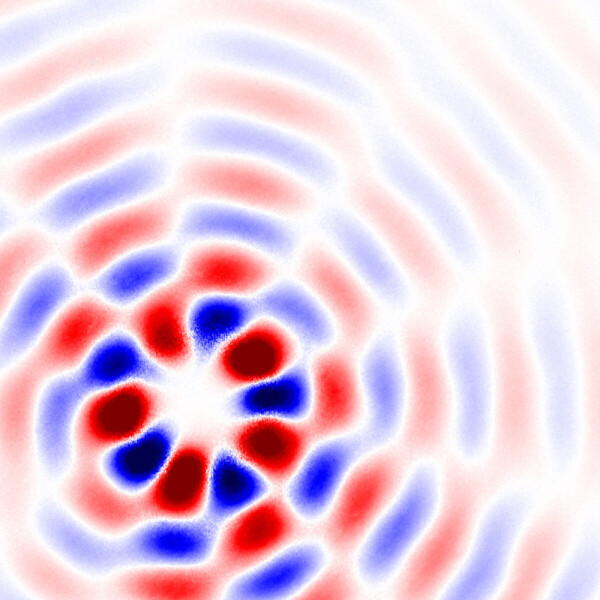
Successful extension of the Collaborative Research Centre 1242
Extremely fast material changes and measurement methods in the range of femtosectons: These are the core aspects of the Collaborative Research Centre 1242 at the faculty of physics at the University of Duisburg-Essen (UDE). The German Research Foundation (DFG) will provide 12 mio. € of funding for a further four years.
Our workgroup is part of the current sub-project A05 "Femtosecond Time-Resolved Soft X-Ray Spectroscopy for an Element Specific Analysis of Complex Nanostructures" (Bovensiepen, Tarasevitch, Wende) as well as of the future sub-project A07 "Charge Transfer, Diffusion and Lattice-Mediated Dynamics in Oxide Heterostructures" (Eschenlohr, Ollefs).
Picture: Vortex formation of light: The pattern represents the electric field, visible for only a few femtosectons in the center of a spiral on a gold surface, when latter is illuminated with circular polarized light. © SFB 1242, Dreher/Janoschka
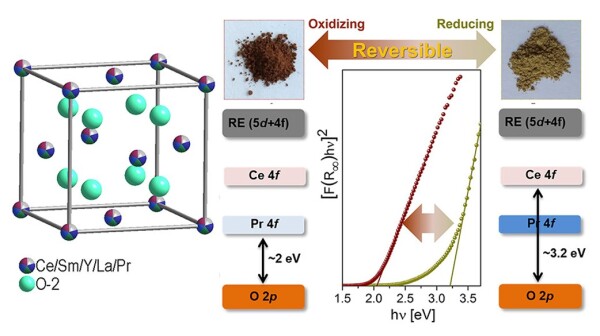
22.05.2020 Reversibly tuning the band structure of high entropy oxides
Researchers of the Institute of Nanotechnology of the Karlsruhe Institute of Technology (KIT) and the AG Wende have tracked the electronic changes in a rare earth element based high entropy oxide (HEO) with heat treatments and are able to reversibly tune the band gap energy of the system. The results of this collaboration are now published, as a featured article, in the journal APL Materials and further highlighted in AIP SciLights.
HEO are a recently discovered class of oxides comprised of five or more elements in near-equiatomic proportion. Despite their high chemical complexity, they usually crystallize in single-phase solid solutions with homogenous cationic distribution.
In the collaboration, the changes of the electronic band structure of a rare earth element-based HEO, (Ce0.2La0.2Pr0.2Sm0.2Y0.2)O2-δ, is studied. Through heat treatment under different atmospheres, it is possible to tune the band gap energy between 2 and 3.2 eV reversibly. For this study, element-specific X-ray absorption spectroscopy measurements were performed at the synchrotron radiation source BESSY II (Berlin) and PETRA III (Hamburg). With this technique, it is possible to track the oxidation states of the different elements and the occupation states of the different orbitals. For a heat treated sample under oxidizing atmosphere, Pr was primarily present in the 4+ state, leading to an unoccupied Pr 4f band and a band gap of 2 eV. For a heat treated sample in a reducing atmosphere, Pr is reduced to the 3+ state with a band gap energy up to 3.2 eV. During these heat treatments, the empty states of the elements La, Sm and Y do not affect the band gap energy, but the authors suggest the roles of these cations is to provide structural stability.
“The reversible tuning phenomenon could also be useful for sensor applications,” said author Abhishek Sarkar. In future investigations, the authors will seek room-temperature reversible tuning methods, such as an electrochemical approach.
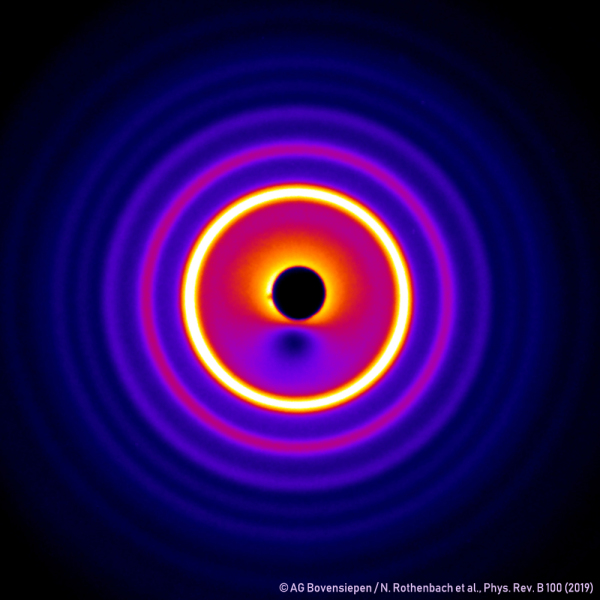
19.12.19 The impact of hot electrons
One can't really see them, but one can still track the energy flow like in a flip-book: Physicist of the University of Duisburg-Essen (UDE) have probed the energy transfer in a metal-insulator material and published their results in the scientific journal "Physical Review B". In the long term, this could contribute to the resolution of the heat problem of microelectronics through the use of purposeful material design.
This publication is the result of a cooperation of the groups of Prof. Uwe Bovensiepen, Prof. Rossitza Pentcheva and Prof. Heiko Wende.
Original publication:
N. Rothenbach, M. E. Gruner, K. Ollefs, C. Schmitz-Antoniak, S. Salamon, P. Zhou, R. Li, M. Mo, S. Park, X. Shen, S. Weathersby, J. Yang, X. J. Wang, R. Pentcheva, H. Wende, U. Bovensiepen, K. Sokolowski-Tinten, A. Eschenlohr
Microscopic nonequilibrium energy transfer dynamics in a photoexcited metal/insulator heterostructure
Phys. Rev. B 100, 174301 (2019)
DOI: 10.1103/PhysRevB.100.174301
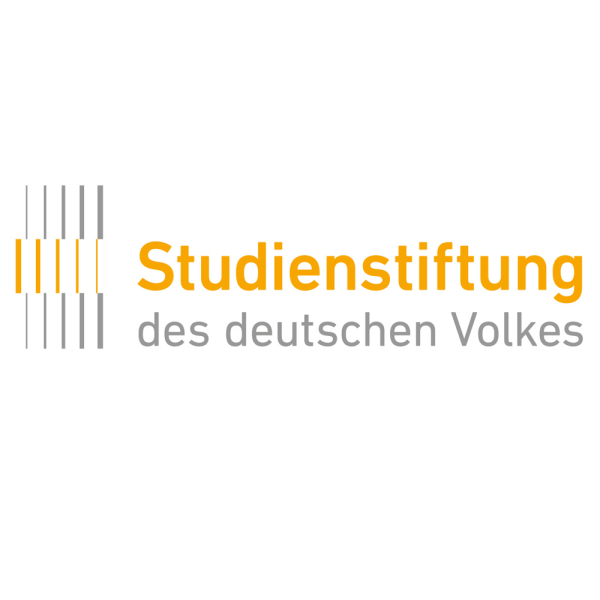
03.10.19 Heiko Wende appointed as liaison professor
Prof. Dr. Heiko Wende is now a liaison professor for the German Academic Scholarship Foundation, having been officially appointed by the board of the foundation in October. He is now the second liaison professor at the Duisburg campus who is also a member of the CENIDE-network.
25.11.19 New magnets for future energy technologies
For a successful energy revolution towards a future with low carbon emissions, magnetic functional materials are needed, be it in the form of strong permanent magnets for wind turbines and electric motors, or functional materials for magnetic cooling. To tackle these challenges, a new collaborative research collective TRR 270 „HoMMage“ will be established on the 1st of January at the TU Darmstadt and the UDE, receiving a grant of €12 million from the German Research Foundation (DFG). Our group is involved via the projects A3 (Katharina Ollefs) as well as B5 and Z-MGK (Heiko Wende).
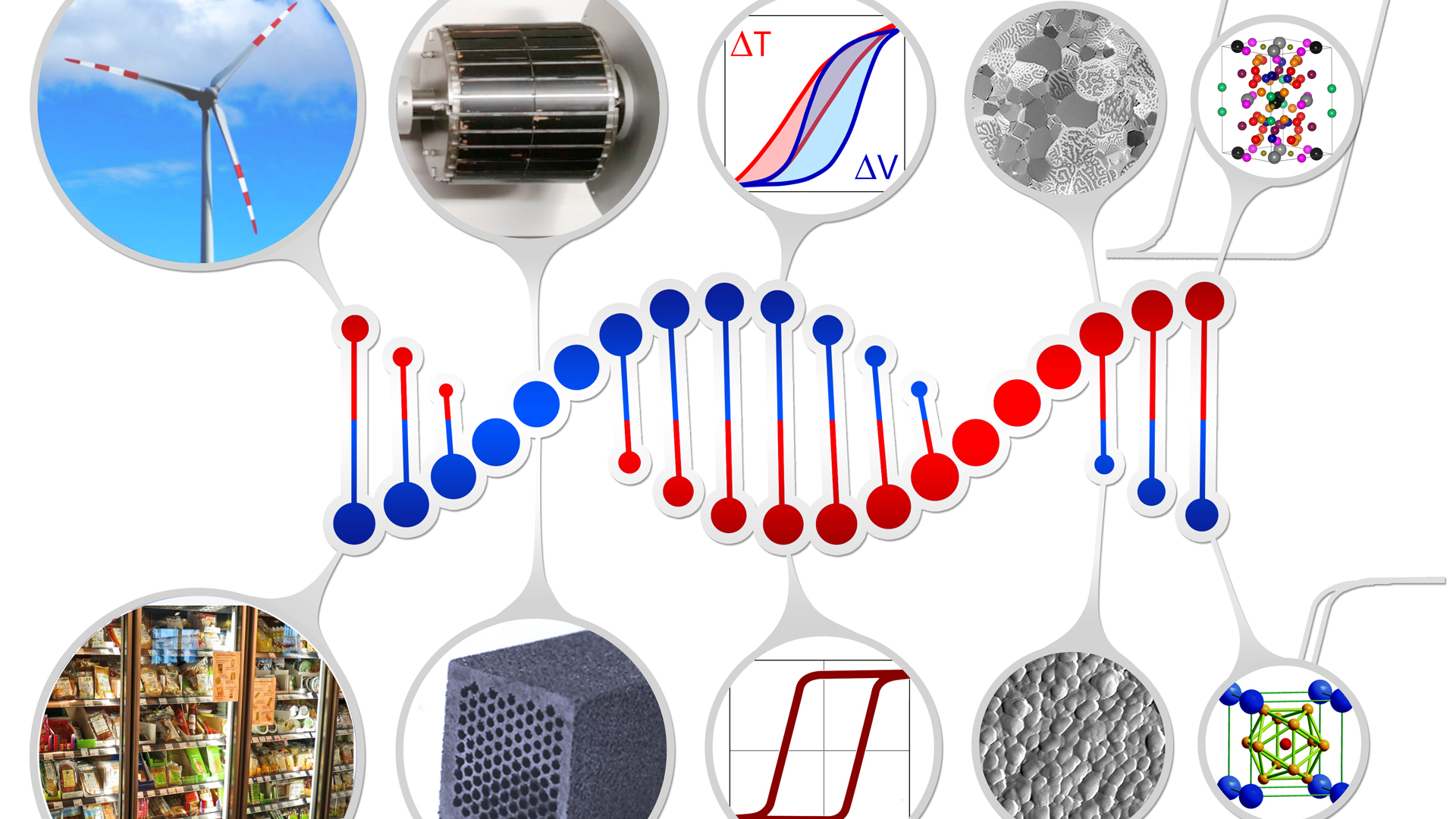
© Windrad (links oben):prspics/Piqza.de/Montage: TU Darmstadt
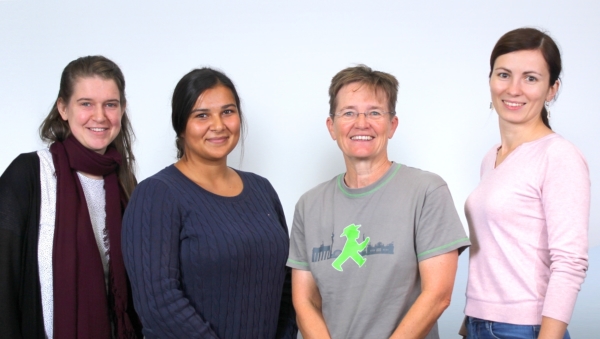
25.09.19 New equal opportunity team
Since 25.09.2019, our faculty has a new equal opportunity team, including two of our members, Katharina Ollefs and Samira Webers (2nd from left), who will support the equal opportunity commissioner Cornelia Geller (left) together with the other delegates Anna Semisalowa (right) and Marika Schleberger (2nd from right). The main goal is to put into practice the equal treatment of women and men at the Faculty of Physics, which includes the promotion and enlisting of female students and staff, as well as improving the compatibility of academic studies, profession and family.
14.06.19 Successful BMBF grants obtained by physicists of our faculty
The federal ministry for education and research (BMBF) awarded a total of 2.8 million Euros for research projects at large scale facilities, which were applied for under the leadership of researchers from the faculty of physics. These concern experiments that can only be performed by the use of large accelerators.
Dr. Katharina Ollefs has requested funding for a project at the European Synchrotron Radiation Facility (ESRF) in Grenoble, while Prof. Dr. Marika Schleberger did the same for a project at the GSI (Gesellschaft für Schwerionenforschung) in Darmstadt.
Ollefs proposal
The BMBF has accepted the proposal of Dr. Katharina Ollefs (AG Wende) for the joint project ULMAG in cooperation with colleagues of the Technical University of Darmstadt (Prof. O. Gutfleisch). The goal of the project ULMAG (ULtimate MAGnetic Characterization) is the construction of a unique and versatile experimental setup, enabling the characterization of elementary (XMCD) and macroscopic magnetic properties of materials by combining X-ray diffraction with magnetostriction, magnetoresistance, magnetoelectric and magnetocaloric effects. The main purpose is the measurement of this multitude of properties under strictly equal experimental conditions. This setup will be implemented at the beamline ID12 of the ESRF in Grenoble, providing a versatile tool for the combined macroscopic and microscopic characterization of magnetic materials. In total, this joint project will be funded with 1.4 million Euros over the course of three years.
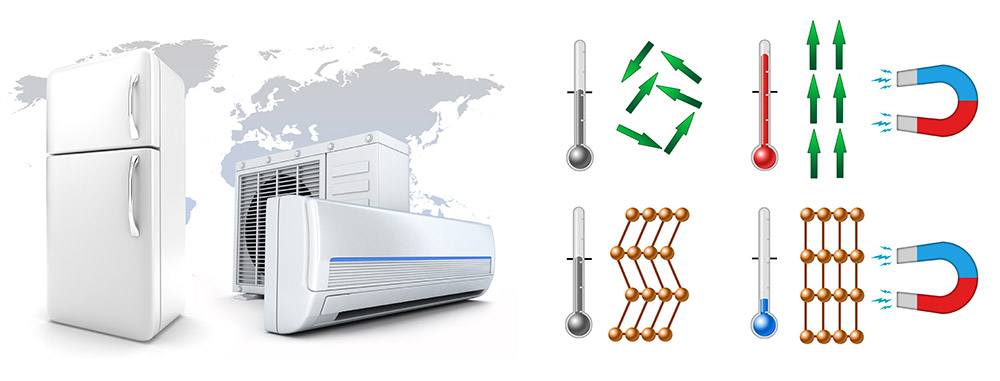
Novel, energy efficient cooling by magnetic materials based on magnetostructural phase transitions. The new ULMAG measurement setup will provide a better in-depth understanding of such coupled transitions.
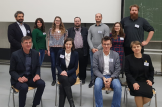
03.04.2019 PhD Focus Session: Biogenic spin phenomena
The PhD focus session “Biogenic Spin Phenomena”, which was organized by PhD students from the group of M. Farle, H. Wende (University of Duisburg-Essen) and T. Weßels (FZ Jülich), assembled a group of prominent experts to share insights and perspectives of Biomagnetism. The symposium with about 80 participants, funded by the DPG, was successful in establishing new links between research groups
We thank all speakers for their excellent contribution and an extraordinary panel discussion. For us PhD students, the organization of the event was a great experience. We are very grateful to the DPG, the jDPG, the University of Duisburg-Essen, and the Forschungszentrum Jülich for enabling this experience. In particular, we would like to acknowledge the Center for Nanointegration Duisburg-Essen (CENIDE) of the University of Duisburg-Essen for financial support.
Organization commitee:
- Iuliia Novoselova (iuliia.novoselova@uni-due.de)
- Thomas Feggeler (thomas.feggeler@uni-due.de)
- Irene Iglesias (irene.iglesias@uni-due.de)
- Nico Rothenbach (nico.rothenbach@uni-due.de)
- Teresa Weßels (t.wessels@fz-juelich.de)
- Benjamin Zingsem (benjamin.zingsem@uni-due.de)
01.04.2019 Focus Session: Magnetic materials for energy efficient applications
The focus session, organized by Franziska Scheibel (TU Darmstadt) and Katharina Ollefs (University of Duisburg-Essen), turned out to be a success after having been selected by the biggest Magnetism Association ("Fachverband Magnetismus" of DPG) of the world as one of its 5 focus sessions in 2019.
High performance magnetic materials are at the heart of many energy-related technologies, such as direct drive wind turbines and e-mobility. They are also important in robotics and automatization, sensors, actuators, and information technology as well as in solid state-based refrigeration. All of these technologies are expected to grow significantly in the next decades and especially, so-called green energy technologies are likely to see an exponential increase. Several international experts in the field of permanent magnets and magnetocalorics reported on different aspects of magnetic materials:
- Microstructure optimization for rare-earth efficient permanent magnets (Thomas Schrefl)
- Advanced methods for the development of high performance hard and soft magnetic materials (Dagmar Goll)
- Compositionally graded films as model systems to study magnetic materials for energy applications (Nora Dempsey)
- Dissecting the magneto-structural transformation in materials with first-order field-induced transitions (Konstantin Skokov)
The Organizers thank for the support by the “Sektion Kondensierte Materie” of the “Deutsche Physikalische Gesellschaft”.
Organization:
- Katharina Ollefs (katharina.ollefs@uni-due.de)
- Franziska Scheibel (scheibel@fm.tu-darmstadt.de)
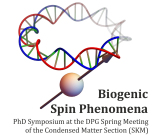
31.01.2019 Symposium awarded to PhD students
Young scientists of the UDE (including Nico Rothenbach and Thomas Feggeler from our group) and the Jülich Research Centre were successful in the procurement of a symposium during Europe's largest congress of physicists. Their interdisciplinary topic "Biogenic Spin Phenomena" was selected from all submitted proposals. Participants of the Spring Meeting of the German Physical Society (DPG) can visit the symposium on the 3rd of April, free of charge and without prior appointment.
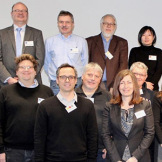
17.05.18 New Collaborative Research Collective involving Prof. Heiko Wende and Prof. Rossitza Pentcheva from our faculty
Nanotechnology and catalysis research are united in a new Collaborative Research Collective that will be established at the University of Duisburg-Essen (UDE) and the Ruhr-University Bochum (RUB) this July, as announced by the German Research Foundation (DFG). This new network ("Heterogeneous oxide catalysis in the liquid phase"), under the auspices of the University Alliance Ruhr (UA Ruhr), will be funded with ca 10 Mio. Euro for four years at first.
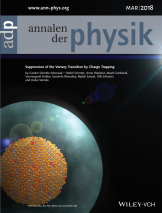
23.04.18 Research results of the AG Wende shown on the cover of Annalen der Physik
Magnetite nanoparticles are utilized for both basic research, as well as application purposes, thanks to their interesting inherent properties. Such iron oxide nanoparticles are already being used as contrast agents for magnetic resonance imaging (MRI), for cancer treatments via hyperthermia, for the controlled in vivo transport of medication, adjustable automotive shock absorbers, magnetic ink for printers, and also for the removal of heavy metals from wastewater. Magnetite is distinguished by a phase transition at 123 K (- 150°C), the Verwey transition.
It is difficult to characterize this phase transition in an ensemble of nanoparticles via diffraction methods. In a cooperation between Dr. Carolin Schmitz-Antoniak (FZ Jülich), members of the AG Wende and theoreticians from the Uppsala University (Sweden), the Verwey transition in nanoparticles was successfully analyzed in detail using X-ray absorption spectroscopy at the synchrotron radiation source BESSY-II in Berlin. Interestingly, it was found that the Verwey transition can be suppressed by a shell of silica (of which an artistic representation is shown on the cover of the renowned journal "Annalen der Physik"). Using spectroscopic investigations, this effect was explained by the trapping (retaining) of charges by the interfaces between the silica shells and the iron oxide nanopartices. This new insight opens up possibilities for the tailoring of nanoparticle properties for new applications, such as smart materials.
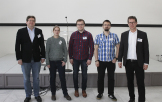
21.02.18 Dr. Joachim Landers receives CENIDE presentation prize
The yearly CENIDE conference was held between the 19th and 21st of January in Bergisch Gladbach. During this event, the best presentations from the Young Researcher Session were awarded with prizes. Dr. Joachim Landers (2nd from right) was also among the prize winners, with his presentation "Simultaneous Study of Brownian and Néel Relaxation Phenomena in Ferrofluids by Mössbauer Spectroscopy".

05.02.18 Microseminar prizes awarded at the Edgar-Lüscher-Seminar
The traditional microseminar prizes were awarded at this year's Edgar-Lüscher-Seminar in Klosters. These honor the best poster presentations that have to be held within a very short time limit. Among the five awardees, prizes were received by Nico Rothenbach (2nd from left) and Alexandra Terwey (2nd from left), with the ceremony being headed by Eberhard Wassermann (3rd from left) and the general secretary of the German Research Foundation (DFG) Dorothee Dzwonnek (3rd from right).

25.01.18 Groups Wende and Farle put new UHV-PLD setup into operation
A new UHV-PLD system in the NETZ building was commissioned on the 25th of January after extensive preparations. The setup, jointly used by the groups Wende and Farle, combines a UHV chamber that was made available by the University of Ulm with a new Excimer laser from Coherent, which was acquired with financial support from CENIDE. Apart from the possibility of using very low pressures during preparation, this chamber allows a great deal of flexibility for sample preparation. The decisive factor is the computer controlled selection of target materials, enabling the production of complex alloys, composites and multilayers.
This chamber will be used for the newly established CRC/TRR 247 in order to compose reference systems for catalysis studies.
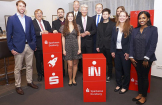
17.10.17 Prize of the Sparkasse Duisburg awarded to Dr. Joachim Landers
Five students and four PhD students were honored by the Sparkasse of Duisburg for their outstanding achievements, receiving prizes of 1.000 and 2.000€, respectively.
Igor Kozeletskyi (business studies), Christoph Kern (social sciences), Jennifer Stemmann (engineering) and Joachim Landers (physics, AG Wende) received the award for their dissertations, which were graded with summa cum laude. Priyanha Logeswaran (business studies), Lukas Fiege (social sciences), Janosch Luttmer (engineering), Alina Behrendt (mathematics) and Magdulin Dwedari (physics) were honored for their exceptional course achievements.
Photo (from left): Sebastian Reicherts (chair of mechatronics), mayor Manfred Osenger, Joachim Landers, Magdulin Dwedari, Rektor Prof. Ulrich Radtke, Dr. Joachim Bonn, chairman of the Sparkasse Duisburg, Igor Kozeletskyi, Christoph Kern, Alina Behrendt, Jennifer Stemmann and Priyanha Logeswaran.
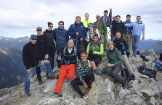
20.08.17 WE-Heraeus-Retreat
The 4-day retreat titled "Solid State Spectroscopy in the Frequency and Time Domain" commenced on the 20th of August at the Hanauer Hütte of the DAV, in the spectacular terrain of the Lechtal Alps, with 22 participants from the groups Wende and Bovensiepen.
The goal of this "Hüttenseminar" was the strengthening of the cooperation between these two groups, which was already achieved during the required mutual support during the initial ascent. The retreat was characterized by hiking tours during several mornings as well as presentations in the afternoons, which were held in English, following topics of a pre-determined scientific programme.
A highlight of the event was the Heraeus-Buffet, which was set up with great care and commitment by the staff of the Hanauer Hütte. The outstanding cooperation between the inkeepers and the visitors clearly shows that this location can be wholeheartedly recommended for such activities.
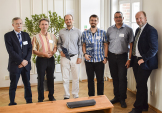
18.07.17 Dr. Joachim Landers receives dissertation prize of the German Ferrofluid Society
In the course of the 16th German Ferrofluid Workshop, outstanding dissertations were awarded the 1.000€ Dissertation Prize of the German Ferrofluid Society.
Dr. Joachim Landers of the AG Wende is also among the awardees, with his dissertation "Study of magnetic relaxation dynamics in soft matter nanoparticle composite systems".
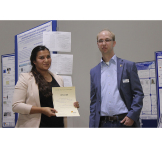
23.11.16 Yearly CENIDE Celebration
With the Kreuzeskirche in Essen being chosen as an unusual location, around 120 members and staff of CENIDE took part in the venue. Between the high white walls and colorful windows, they informed themselves about the work of their colleagues during the poster session, watched the award ceremony and had a chat about research and everyday life during a buffet of Currywurst, quiche and Co.
Samira Webers of our group was among the prize winners this year, with her poster “Magnetic relaxation effects of raspberry particles in meltable biopolymers”.
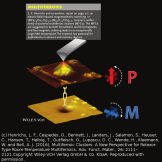
12.07.16 Currentless switching of processors
It's a vision of a computer that is both efficient and works without generating heat: A team of scientists, among them those of the Center for Nanointegration (CENIDE) of the University of Duisburg-Essen (UDE), has succeeded in the currentless switching of so called multiferroic clusters. This discovery can represent a further step towards the next generation of microchips and has now been published as leading article in the scientific journal "Advanced Functional Materials".
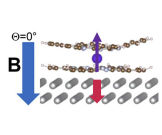
09.06.16 How do spins communicate with each other?
Members of the Wende research group have analyzed spin-communication channels of magnetic double-decker molecules on ferromagnetic substrates. Their results were so peculiar that they were now published in the journal "Nature Scientific Reports". If the spin changes at one point in space, it causes an influence at another point. The strength of this influence was examined, referred to as coupling, as well as the underlying mechanism of this coupling (see schematic image). It shows a clear antiferromagnetic coupling of the rare earth ions Tb and Dy to the ferromagnetic substrate through the phthalocyanine ligands. This was examined by the element specific magnetization as a function of an applied magnetic field. The precise analysis of this field dependence schows that the Tb ions are more strongly magnetically coupled than the Dy ions. The measurements were performed at the European Synchrotron Radiation Facility (ESRF) in Grenoble, France.
A. Candini, D. Klar et al. Nature Scientific Reports 6, 21740 (2016)
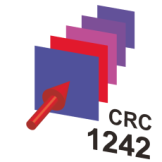
31.05.16 New Collaborative Research Centre 1242
The DFG has established a new Collaborative Research Centre at the Faculty of Physics, with Heiko Wende, Uwe Bovensiepen and Alexander Tarasevitch supervising the subproject A5.
This project aims at the combined investigation of the non-equilibrium dynamics in time and space in complex materials after microscopic excitation. To achieve an element selective insight into e. g. Fe/MgO multilayers or Co/CoxOy core shell nanoparticles excitations will be pumped optically by femtosecond pulses and probed resonantly in the soft X-ray range. We will carry out pump-probe experiments with complementary X-ray sources for femtosecond pulses from 1) synchrotron radiation facilities and free-electron lasers and 2) table-top sources at Campus Duisburg. The main goal is the energy transfer dynamics between the components in metal-insulator hetero-structures.
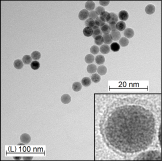
16.03.16 Small relaxed magnets
Magnetic nanoparticles are real all-rounders: They are utilized for cancer therapy, in loudspeakers or shock absorbers. But so many different applications require very precisely tuned material properties. Researchers around Professor Wende of the Center for Nanointegration (CENIDE) of the University of Duisburg-Essen (UDE) have now analyzed how such particles relax, publishing their results in the renowned journal "Nano Letters". The main focus was on the simultaneous measurement of Brown and Néel relaxation by Mössbauer spectroscopy.
This project is a cooperation of the Priority Programme 1681 of the German Research Foundation and their colleagues at the Technical University of Braunschweig.

16.11.15 Materials, smart and changeable
Functional materials are real multitalents. They are found in a large number of devices nowadays, from the car to the smartphone. The German Research Foundation (DFG) supports their development. For an additional three years, the research group "Ferroic Functional Materials - Multiscale Modeling and Experimental Characterization" (FOR 1509) receives continued funding. This includes two subprojects of physicsts and engineers of the University of Duisburg-Essen being funded with over 750.000 Euros.
To pave the way for further successfull collaborations, the scientists met for a kick-off on the 19th and 20th of November in the NETZ (NanoEnergieTechnikZentrum). Their goal is a new quality in the characterization and modeling of so called smart materials. These functional materials are capable of transforming one physical change into another, such as changes in mechanical strain or temperature using magnetic fields. New tools for modeling are to be developed using an interdisciplinary approach.
The two coordinators, Prof. Dr. Jörg Schröder and Prof. Doru C. Lupascu are jointly researching with Dr. Dominik Brands (faculty of engineering) and Prof. Dr. Heiko Wende (faculty of physics) at the UDE. Further colleagues at the universities of Aachen, Darmstadt, Dortmund, Erlangen-Nürnberg, Kaiserslautern and Stuttgart partake as well. Their expertise encompasses a large theoretical and experimental bandwidth of the functional materials in question.
Four of the seven subprojects are situated at the UDE and the TU Dortmund. These projects show how intensely the Ruhr Valley universities are connected under the roof of the University Alliance ruhr: The universities of Bochum, Dortmund and Duisburg-Essen are linking their expertise in materials and production science under the core profile "Materials Chain". This includes material design and refining all the way to characterization and processing in manufacturing processes in all phases of modern production and material sciences.
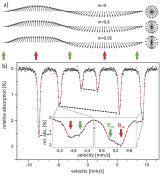
13.10.14 Magnetic Ordering in Multiferroic Nanoparticles
Scientists of the group of Prof. Wende published an article in NanoLetters, in a CENIDE cooperation with the Institute for Materials Science in Essen.
The paper deals with the properties of BiFeO3 (bismuth ferrite), which is a room temperature multiferroic, but hasn't seen widespread application due to its antiferromagnetic ordering. However, in nanoparticles, the material shows weak ferromagnetism, apparently a size dependent effect, which has already been discussed in a previous cooperation.
In this latest work, special attention was paid to the magnetic ordering of BiFeO3, which has a complex, periodic cycloidal structure with a defined period lenght. By measurements on different sized nanoparticles with Mössbauer-spectroscopy, the temperature dependent behaviour of the spin cycloid could be determined.
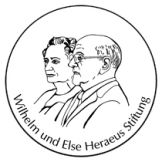
Announcement 575th Wilhelm and Else Heraeus seminar: "Functional metalorganics and hybrids"
17 - 19 November 2014, Physikzentrum Bad Honnef (near Bonn), Germany
More details and application information: „575. Wilhelm und Else Heraeus-Seminar:”
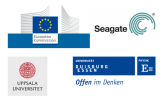
29.11.13 Industry and fundamental researchers cooperate on project - More storage density for PCs
In today's world, computer hard disk drives (HDDs) must be able to store enourmous amounts of data, which is slowly turning into a problem for manufacturers: It's hardly possible to increase performance with currently used materials. We, the workgroup Wende of the University of Duisburg-Essen, the Uppsala University and Seagate, a world leading manufacturer of HDDs, are seeking to change this. We want to develop ultra thin layer structures that allow a higher magnetization, without which the reading and writing of information wouldn't be possible. Our project NU-MATHIMO (New Materials for High Moment Poles and Shields) will receive a sponsorship of one million Euros from the EU.
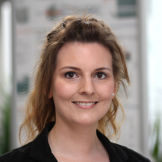
04.11.13 Dr. Carolin Schmitz-Antoniak takes office as Helmholtz group leader for young scientists
Dr. Carolin Schmitz-Antoniak from our workgroup was able to acquire one of the very well equipped and sought-after positions as Helmholtz junior scientist group leader. She will take office at her new position on the 1st of February 2014 at the Peter Grünberg Institut 6 of the Forschungszentrum Jülich.
In the scope of this program, young scientists receive a yearly sponsorship of 250.000€. These funds enable them to build up and lead their own research group for the first time.
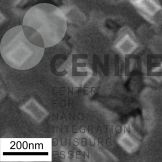
26.06.13 Nano duet
Exploiting ferroelectric and ferromagnetic properties of a system interdependend on each other has been in the focus of current research for quite some time. The team of Prof. Heiko Wende, Prof. Wolfgang Kleemann and Dr. Carolin Schmitz-Antoniak succeeded recently using a composit system. The results have been published in "Nature Communications".
more about “Nano duet” (German)
external information on “Nano duet”

29.11.12 Priority programme of the DFG: SPP 1599
Refrigeration is one of the main sinks of the German and European electricity consumption and accordingly contributes to worldwide CO2 emissions. High reduction potentials are envisaged if caloric effects in solid materials are utilized. The recent discovery of giant entropy changes associated with ferroelastic phase transformations promises higher efficiency. Ferroic transitions enhance the entropy change of magneto-, elasto-, baro- and electro-caloric effects. Furthermore, because the refrigerant is in a solid state, the technology completely eliminates the need for high global-warming potential halofluorocarbon refrigerants.
In order to accelerate research on ferroic cooling DFG decided to establish the priority program SPP 1599 in April 2011. This SPP will address the following major challenges for introducing ferroic materials in practical cooling applications: Understanding of the underlying mechanisms, energy efficiency, effect size, fatigue, and system integration.
Prof. Dr. Peter Entel, Prof. Dr. Michael Farle/Prof. Dr. Mehmet Acet and Prof. Dr. Heiko Wende from our faculty togehter with Prof. Dr. Doru C. Lupascu (Faculty of Engineering, Institute for Materials Science) applied successfully within the new DFG priority programme SPP 1599 and will now contribute to this important research area.
Read more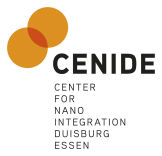
07.11.12 Winning papers and photos
During yesterday's general meeting at the Sportschule Wedau, the five winners of the Best Paper Awards and the Photo Competition were honored, also including Dr. Carolin Schmitz-Antoniak and Soma Salamon from our workgroup.
Read more
28.08.12 Dr. Carolin Schmitz-Antoniak receives the Dale Sayers Young Scientist Award in Peking
Starting in 2003 the International X-ray Absorption Society (IXAS) awards the IXAS Dale Sayers Young Scientist Award to young scientists who made an outstanding contribution in the XAFS field. Dr. Carolin Schmitz-Antoniak from the group of Prof. Dr. Heiko Wende recieved the prize during the 15th International Conference on X-ray Absorption Fine Structure (XAFS XV) in Peking for her work on the structure and magnetism of nanoscale systems. The prize is awarded in honour of Dale Sayers, one of the pioneers in modern x-ray spectroscopy for investigations of the local structure. Besides the certificate, Dr. Carolin Schmitz-Antoniak recieved 500 Dollars and a chinese tea set.

14.11.11 Ultrahard nanomagnets
Scientists of the groups of Prof. Wende, Prof. Farle, and Prof. Entel published some of their recent work in “Nature Communications”.
Nanomagnets have become ubiquitous: in medicine applications as well as for data storage. Therefore they have to be sometimes strong, sometimes weaker. Members of the groups of Prof. Dr. Heiko Wende, Prof. Dr. Michael Farle, and Prof. Dr. Peter Entel investigated how to tailor the properties of such tiny magnets and published the results just recently.
more about “Ultrahard nano magnets” (German)
external information on “Ultrahard nano magnets”
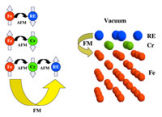
06.05.10 Experiment of the month
How to beat the 75 year old Slater-Pauling limit?
Magnetic materials with a large saturation magnetic moment are used in various applications, such as write heads in computer hard disks, electromagnetic motors, generators, and transformers. Improved and more efficient materials are continuously sought after, but, for the last 75 years, the largest room temperature saturation moment (2.45 µB per atom), as described by the maximum of the Slater-Pauling curve, has been provided by an Fe-Co alloy. Rare earth metals have a larger magnetic moment, however they are not ferromagnetically ordered at room temperature. By combining ferromagnets like Fe with a rare earth element the ordering temperature is enhanced by the magnetic coupling to Fe. Unfortunately the coupling between such metals is antiferromagnetic which in turn reduces the net magnetization. In a joint work of the group of Prof. Wende and the theory group of O. Eriksson (Uppsala) this limitation was overcome by inserting an interlayer of Cr between the ferromagnet and the rare earth metal.
more about “Experiment of the month” (German)
external link to the published paper.

